Cards In This Set
| Front | Back |
|
How is emotion defined? What are its three components?
|
An adaptive response of the whole organism
1. physiological arousal2. expressive behaviors3. conscious experience** |
|
James-Lange Theory? Cannon-Bard Theory?
|
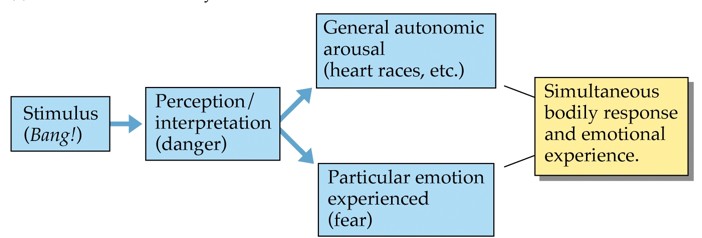 JL- physiological response comes before conscious awarenessstimulus -> perception -> specific pattern of autonomic arousal -> particular emotion experiencedheart pounding --> fear CB-says physiological response and conscious awareness are simultaneousstimulus -> perceptions -> general arousal + particular emotion -> simultaneous bodily and emotional experience you see something scary ---> heart pounding + fear simultaneously |
|
What are the roles of the sympathetic
and parasympathetic divisions of the autonomic nervous system, and how do they
relate to arousal? How does
arousal relate to performance? Is it good to be highly aroused? Why or why not? (See figure 12.2)
|
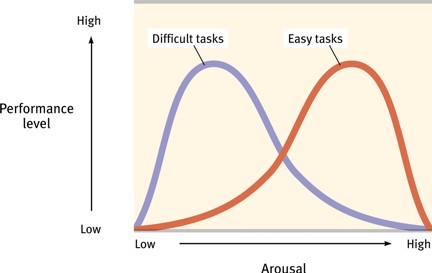 Sympathetic- arouses body in a crisisparasympathetic- calms when danger passes performance levels peak at low arousal levels, and higher level for easy or well learned tasks - only good to be aroused if you are doing mindless work. :) |
|
What is Schacter’s Two Factor Theory of emotion and how is it a compromise? (See Figure 12.1)
|
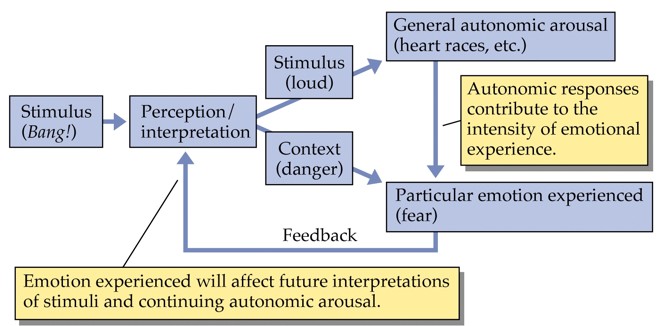 Emotions depend on BOTH arousal and cognitive interpretations - says congitive awareness + arousal causes fear I'm scared + heart pounding = fear |
|
How do emotions differ from
one another in terms of their physiological characteristics? What are the hemispheric differences
with regard to positive and negative emotions?
|
-emotions do not differ biologically - fear, sexual arousal, joy, and anger- all produce similar levels of autonomic arousal
NEGATIVE EMOTIONS- Right hemisphere POSITIVE EMOTIONS- Left hemisphere |
|
What is the spillover
effect?
|
The arousal of one event spills over into the response to another event- happiness is contagious- study where men became similar to person in the room- arousal fuels emotion, but cognition channels and defines it
|
|
How is it possible that
emotional reactions can sometimes occur before we actually interpret incoming
sensory information? What pathways
of the brain are involved? (See
Figure 12.6)
|
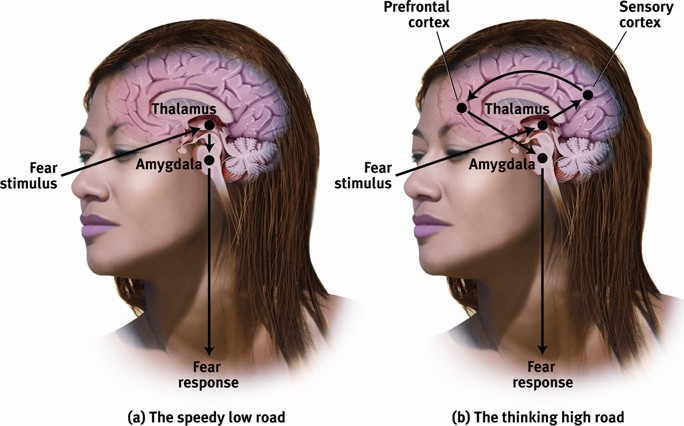 DIRECT CONNECTIONS: from the thalamus to the amygdala provides a shortcut to emotional responses before cognitive evaluation takes place. the slower route: INDIRECT CONNECTIONSstimulus--> thalamus --> sensory cortex --> prefrontal cortex --> amygdala ---> fear response |
|
What is a polygraph
test? What does it measure? How is it used? How accurate is it?
|
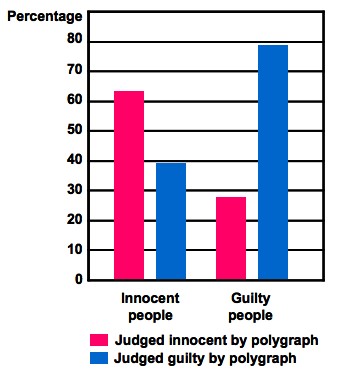 - "many graph" test: lie detection test- measures several physiological responses accompanying emotion- perspective, heart rate, bp, breathing rate- take both CONTROL and CRITICAL questions to compare results- not to accurate yet... |
|
What is non-verbal
communication? How do men and women differ in their ability to express and read
emotion?
|
We can convey information through our expressive behavior: tone, gesture, facial expression...
women are better at reading emotional cues, and express emotion more visibly |
|
Are emotions expressed and
interpreted in the same way in all cultures? How do cultures differ in terms of emotional expression?
|
NO. Basic expression are universal (smiling), but some cultures (western) are more emotionally expressive than others.
|
|
How do facial expressions
affect people? What is the facial
feedback effect?
|
Watch out.
-facial expressions are CONATAGIOUS, and we tend to imitate expressions- facial expressions influence mood |
|
How do we categorize
emotion? What are the two dimensions that are typically used? (See Figure 12.16)
|
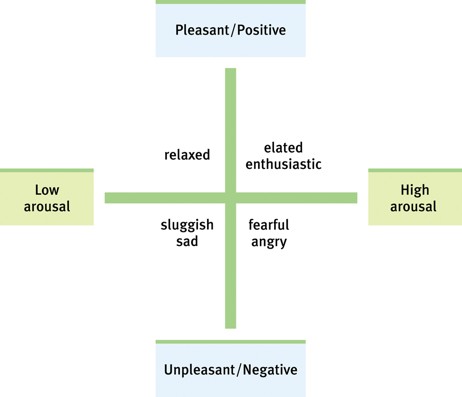 AROUSAL: low to high VALENCE: happy/pleasant to sad/unpleasant |
|
What have researchers
learned from studies about FEAR? How do we acquire fears? How does evolution play a role? What
part of the brain is involved in fear?
|
- fear is an adaptive function- many fears are LEARNED (classical, observational, constrained by biological predisposition) - controlled by the AMGYDALA
|
|
What factors influence how
we express anger?
|
The HYPOTHALAMUS:
|
|
What is the catharsis hypothesis? Does research support this idea?
|
- releasing aggressive energy (through action or fantasy) relieved aggressive urge. --> NOT TRUE. Expressing anger leads to MORE hostility. Deal with anger constructivtly. Discuss your feelings calmly and openly, people. :)
|



